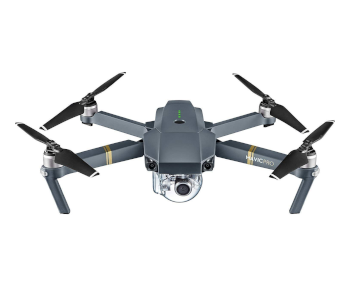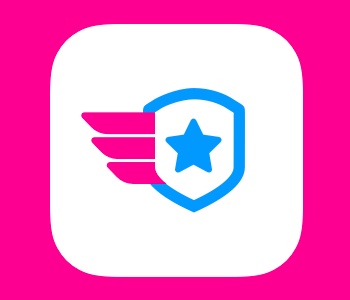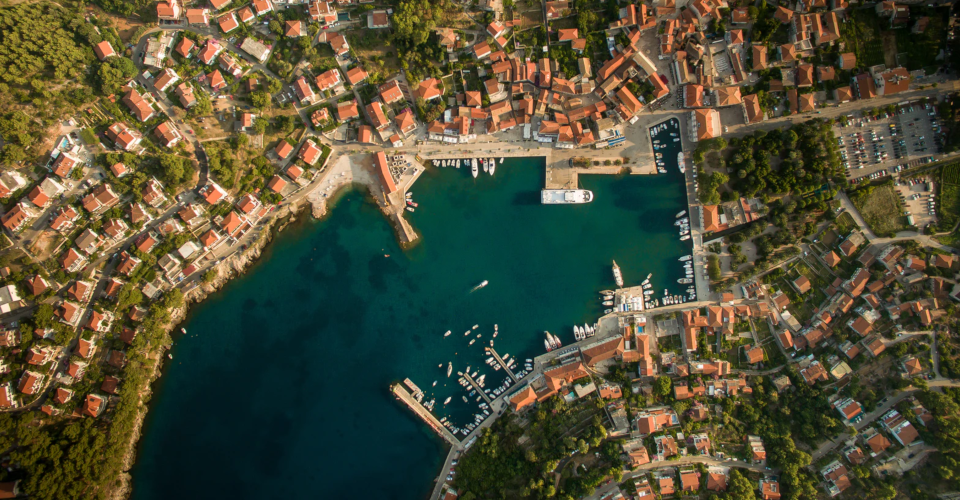Is Investing in A Drone Worth It for Real Estate Advertising?
The beauty of a novel technology like drones is that it provides opportunities for innovation that did not exist before. We’ve already seen a lot of ways in which drones have been used creatively across several industries – from capturing wedding shots to the mapping of mountainous terrain.
A surprising intersection of drone technology is with real estate, particularly in the field of advertising. While drone photography is very common, real estate advertising is a smaller sub-section with a narrower focus. How can drone technology be effectively used for real estate advertising? How much investment would it take and is the investment worth it?
Benefits of drones for real estate advertising
To give us a frame of reference in assessing if an investment on a drone is worth it specifically in the field of real estate, we need to look at the benefits that it can give. Drones are unique photography and filmmaking tools that allow us to see the world from perspectives that would not have been possible before.
1. Captures a sense of scale

One of the challenges of capturing photos from the ground is that it’s almost impossible to give the photos a sense of scale. After all, you can only capture one or two sides of a house at a time and cannot include a lot of reference points.
From the angle of a flying drone, however, you can capture an entire property with a single shot. With an aerial photo, an interested buyer can see how large a property is in reference to streets, trees, people, fences, and other context clues. You can even have a drone fly around the whole perimeter of the house while capturing a video.
The human brain has a natural tendency to put together several images and videos and come up with a composite image. By giving clients photos from more perspectives, they can conjure up a more accurate image of the property being sold even without having to visit it physically.
2. Allows for virtual tours
Free from the shackles of the ground, a drone can fly around just about any part of a property. You can shoot a video starting from the top, go down at above ground level, do a full revolution around the house, pay special attention to the roof and finish off by showing off the house’s immediate neighborhood.
With a careful selection of drones and skilled drone flight, you can even pull off an indoor virtual tour by flying the drone inside the house. Admittedly, this is hard to execute but can prove to be a very effective marketing tool.
3. Shows off the surroundings
If you use a drone to document a property being sold, you have the rare opportunity to show the property alongside its surroundings. For some clients, this is a very important factor. Questions such as how far from the street the house is or how many other adjacent properties there are can be answered with a quick video.
Taking it further, you can also use a drone as the tool to show how nice the neighborhood is. You can show off how well-maintained the roads are, how close the hospital and school are to the property, and how nice the other nearby houses look like. People like living in a nice neighborhood, and this is a selling point you can exploit by using a drone.
4. Shows the roof
This may sound silly, but some clients put a lot of stock on how nice the roof of a house is. Considering how critical a role the roof plays in protecting the people inside the house, it’s actually a pretty reasonable demand. A well-maintained roof also adds a lot of value to a property, so this is something that you can show off for properties at the higher end of the market.
5. Provides better resolution than satellite images

Before drones, there was only one inexpensive way to show aerial images – grab them from sites that publish free satellite photos. While a satellite image succeeds in giving a sense of scale, there is no doubt that they look absolutely terrible. In terms of image quality and resolution, even the best satellite image pales in comparison to a shot captured by a drone with a 4K camera.
6. Cheapest way to capture aerial photos
If you don’t have a drone but insist on capturing aerial photos that look nice, there really is only one other way option: hire a helicopter and a professional photographer. The quality of images produced from such a method can be very good, but this option is also very expensive. The cost of hiring a helicopter and the services of both a pilot and a photographer can easily be more expensive than the cost of a mid-range camera drone.
All the benefits of a drone do not mean that they are the all-around photography solution. If you already use DSLR cameras for property documentation, they can still come in handy for capturing interior details and for fixed-position photography. Think of drones as a massive upgrade to your tool kit.
How much investment would it require?
By now, you probably anticipate that getting a drone isn’t going to be cheap. On top of the drone, you’ll have to get accessories, a carrying bag, and a couple of spare supplies. What you may not have thought of is the expenses of training for drone flight and for getting your professional services certified under the FAA. To make sure you don’t miss anything, here’s an accounting of the financial investments you’ll need to make to integrate drone flight into real estate advertising.
1. The drone and accessories
The most obvious investment will be towards the drone itself plus the accessories. The exact cost will depend heavily on what type of drone you want to get. For high-end camera drones, you will want to prepare anything between $1300 to $2000. At the minimum, you will want to get a drone with a 4K camera and a mechanical stabilizing gimbal.
You will also want to get a bunch of accessories so that you can be ready for anything when out in the field. The essentials will include a few spare batteries, one to two sets of spare propellers, a sun hood, a landing pad, a multi-port charger, and a high-quality carrying bag. Prepare around $200 to $300 for the accessories.
2. Drone flight training

To be clear, formal flight training is not a requirement when flying a drone for real estate advertising. If you’ve had ample experience with flying a drone and taking aerial shots, then this might not be something that you’ll need. However, having a training certification may be a nice marketing tool when offering your services. Any additional skills you can earn along the way should prove to be useful eventually.
For beginner drone pilots, PilotInstitute offers a Drone Flying 101 course which should just about cover all the basic aspects of drone flight including standard flight maneuvers, legal issues, and aerial photography rules. You can go a notch higher with the Drone Maneuvers Mastery Course, which aims to enhance your drone flight skills. Instructions are given via detailed video explanations and the lessons have been designed to gradually ramp up in difficulty.
Taking these two courses will cost you less than $100. There are dozens of other companies that offer drone flight training courses which may offer an on-hands experience. These will likely be more expensive. If you’re going for drone flight training, be ready to spend anywhere between $100 to $300.
No matter which drone training course you take, it’s always a good idea to pick the brains of more experienced drone pilots. The stuff you will learn in these courses will probably come in handy when you start offering professional services or even in the process of securing an FAA certificate – which brings us to the next topic.
3. Part 107 certification
Whether you are offering your drone flight services for real estate advertising or would like to fly a drone yourself for your real estate career, you are going to need a Part 107 remote pilot certificate. More commonly known as a drone license, this is the certification that the FAA requires for al forms of commercial drone operations.
The good news is that the process of earning a drone license is pretty quick – you can go through it in less than a month. All you need to do is to take and pass a 60-item multiple-choice Part 107 knowledge test and go through a TSA background check.
By far, the knowledge test is the step of the process that is harder to surmount. The test covers a pretty wide range of topics which include weather patterns, aeronautical charts, map reading, drone flight performance, radio communications, and emergency response. Lots of these topics aren’t exactly common knowledge, so you’ll have to do a lot of studying.
Online courses for Part 107 preparation abound online. There are also some free materials out there, but you cannot expect them to have the same level of detail and organization as paid training courses. PilotInstitute offers a Part 107 Commercial Drone Course which consists of about 13 hours of instructional videos, more than 300 sample questions, and illustrated cheat sheet, a flashcard app, and access to exclusive study groups.
For a limited time, this Part 107 course will only cost you $149. There are far more expensive options out there, and a more prudent budget range would be between $200 to $400. On top of the cost of training (which is optional), you will have to pay a $160 non-refundable testing fee for the Part 107 knowledge test.
All in all, you’ll have to be prepared with $1700 to $2800 to get started with all the tools you need for drone-based real estate advertising. Take note that the price of the drone plays a huge role in coming up with the budget. There are a lot of inexpensive options out there. All training courses are optional, even those meant for Part 107 preparation.
How much can you earn with drone-based real estate advertising?

With a minimum investment of $1700, it’s clear that getting a drone is not a decision to be taken lightly. As with any investment, the wisdom of this decision is determined by how much earning value it can generate. How much can a drone pilot who offers real estate advertising services earn? Conversely, what kind of sales performance can a real estate agent expect when they start using aerial photos and videos?
An independent provider of drone-based services can reasonably charge a rate of $30 to $50 per hour doing drone photography work. An alternative pricing scheme depends on the type and volume of output. For instance, a photo package that consists of 5 to 15 still images can cost between $75 to $150. Aerial videos can fetch a premium rate – anywhere between $150 to $350 for 1 to 3 minutes of videos.
Naturally, you can increase your rates as you build up experience and develop better skills. Rates of up to $150 per hour aren’t uncommon among the ranks of experienced drone pilots.
On the side of the real estate agent, the numbers seem very favorable towards drone use. According to a survey done by the Wal Street Journal, clients spend an average of 60% of their time deliberating a property by looking at its images. Moreover, a whopping 83% of clients prefer working with real estate agents that use drones.
When it comes to the turnover of properties being sold, it has been reported that properties marketed using aerial images are sold 68% faster than those without. Around 73% of clients also prefer listing with agents that use aerial videos as marketing tools.
Since the figures are in percentages, it’s impossible to put an exact dollar value on the benefits of drone use for real estate agents. The sales increase that a real estate agent can expect is relative to their normal performance. In any case, it’s pretty clear that drones represent a competitive advantage in the field of real estate marketing.
Final thoughts
In real estate, as in any other field, a drone is only useful if utilized properly. Think of it as a tool. The benefits of drone use can only be reaped if the tool is yielded properly and is paired with standard business savvy. It’s not going to be magically transformative of a struggling career in real estate.
Although drones have been proven to be very good marketing tools, it would be inadvisable to neglect the fact that they also require a huge investment. Not only is a high-end drone expensive, but there are significant expenses associated with training and FAA certification requirements.

